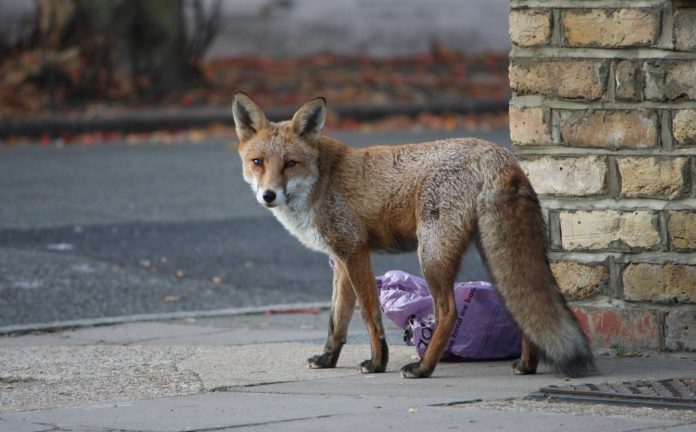Tom Hedley sees an urban fox, and looks him in the eye.
It’s the early hours of a crisp Sunday morning. The party kids have long deserted the town, now littered with left over chicken shop wares and remnants of dignity. The street cleaners are having a nightmare, but for our four-legged residents, the bell has just rung for lunch.
Not only stalking the streets at night, however, in the full light of day and and just five feet away, I witnessed this remarkable critter taking a stroll on his afternoon off.
My new foxy friend was taking on the world, four small steps at a time. He watched as students passed through the Royal Dockside, occasionally stopping to have a scratch or stretch out hind legs (that’s the fox rather than the students). I could have reached out and touched him, if I wasn’t so jumpy. At one point I would have sworn he was chatting up a couple of birds.
But why was Mr Fantastic out today, of all days? There are plenty of pigeons roaming around, but surely even they’re not stupid enough to fall into into his fiendish jaws.
After all, foxes are typically shy, dusk-roaming creatures, and for good reason – they can’t catch a break.
Centuries of cruel countryside hunting from bloodthirsty packs of foxhounds and compensating-for-something lordships, means that setting up home in the city is an appetising prospect for our bat-eared residents. But the culling didn’t stop, even with the Hunting Act of 2004 abolishing the ‘sport’.
In 2013, a fox reportedly attacked a baby in a South East London home. London was in uproar. Mayor Boris Johnson felt obliged to declare: ‘we must do more to tackle the growing problem of urban foxes’.
‘They may appear cuddly and romantic but foxes are also a pest and a menace, particularly in our cities,’ he added.
Fortunately for Mr Fox, attacks on humans are extremely rare. After the baby-mauling incident, an RSPCA spokeswoman pointed out: ‘It’s not typical fox behaviour at all. Foxes will come closer to a house if there are food sources. Then they can become quite bold, but they usually do back off and run away when there’s people around’.

Fox In The Street by Karen Arnold
But this was not enough to reassure good people of London. In 2014 the Telegraph warned that there were more than 10,000 foxes living in London, and perhaps bizarrely, residents were reported to be hiring urban snipers. According to the New York Times, marksmen were charging £75 for the first animal downed, and £50 thereafter.
They say everything has its price.
One sniper claimed his beef began when a fox ripped the head off his daughter’s Guinea pig. My cat’s done worse, but then again, a lot of people want to throw her out the window, too.
Foxes, who typically don’t live past two years of age in the wild, are dealing with a notorious image problem. Rooting through bins is one of their supposedly unique failings. But let’s not get too hypocritical.
‘How to Dumpster Dive: 15 steps (with pictures)’ offers clear insight into actual human beings salvaging left over food from bins. And here’s Vice reporter Harmon Leon reporting on the culture of ‘freeganism’:
‘There were bags of trash in front of me, and I was digging through them. My hands were sticky and covered in garbage juice. A dog walked over and peed on a bag I was about to look through. Nicely dressed people walked by and gave me various degrees of looks; a couple quickly diverted their eyes; a man offered an expression of pity.’
When you’re propositioned with free food and a cushy’s night sleep in an abandoned terrace, even the humans – sorry, foxes – can’t say no.
So what’s left of our new-found furry friend, other than a reputation for infanticide and a distinctive smell of last Friday night? To be totally honest, I don’t blame the pup for finding his feet on the regenerated Thames dockside. After all, he’s just an animal suffering from the wrath of unnatural human infrastructure. We’re the ones feeding them the leftover food we shouldn’t be eating anyway. We’re the ones hunting them in and out of the city.
Urban foxes are a problem we just have to deal with. Culls don’t work; they breed too quickly for extermination to be viable. On balance, the presence of foxes might even be helpful; 10,000 strong, surely they do wonders for controlling London’s rat population.
If you don’t like them, fine, but for fox sake, stop dirtying the streets with your three-piece box meal you couldn’t be bothered to eat.

